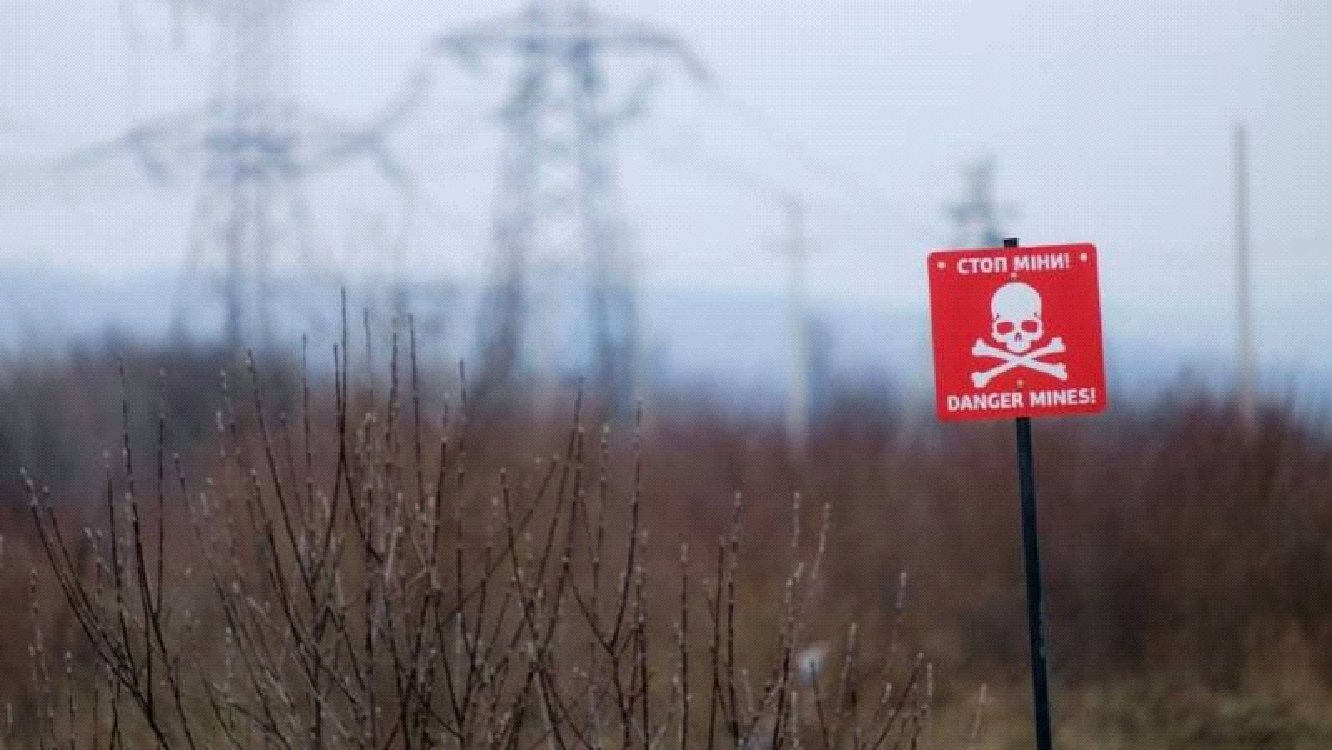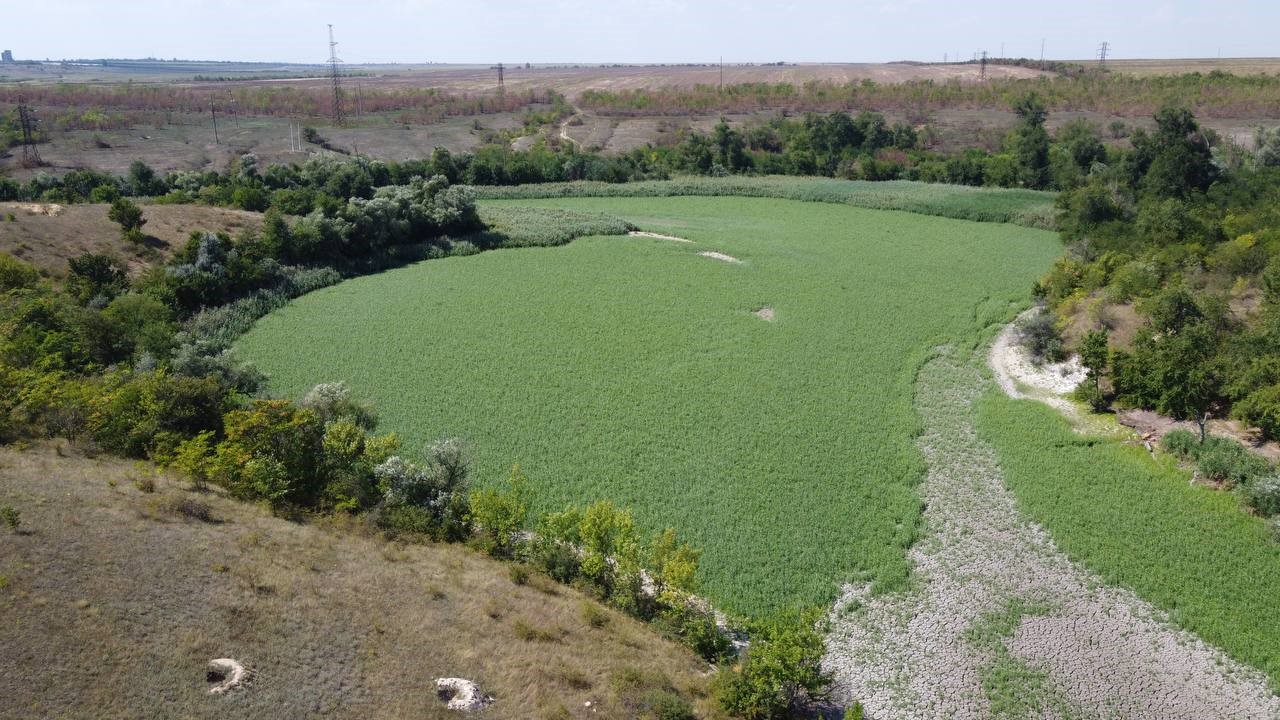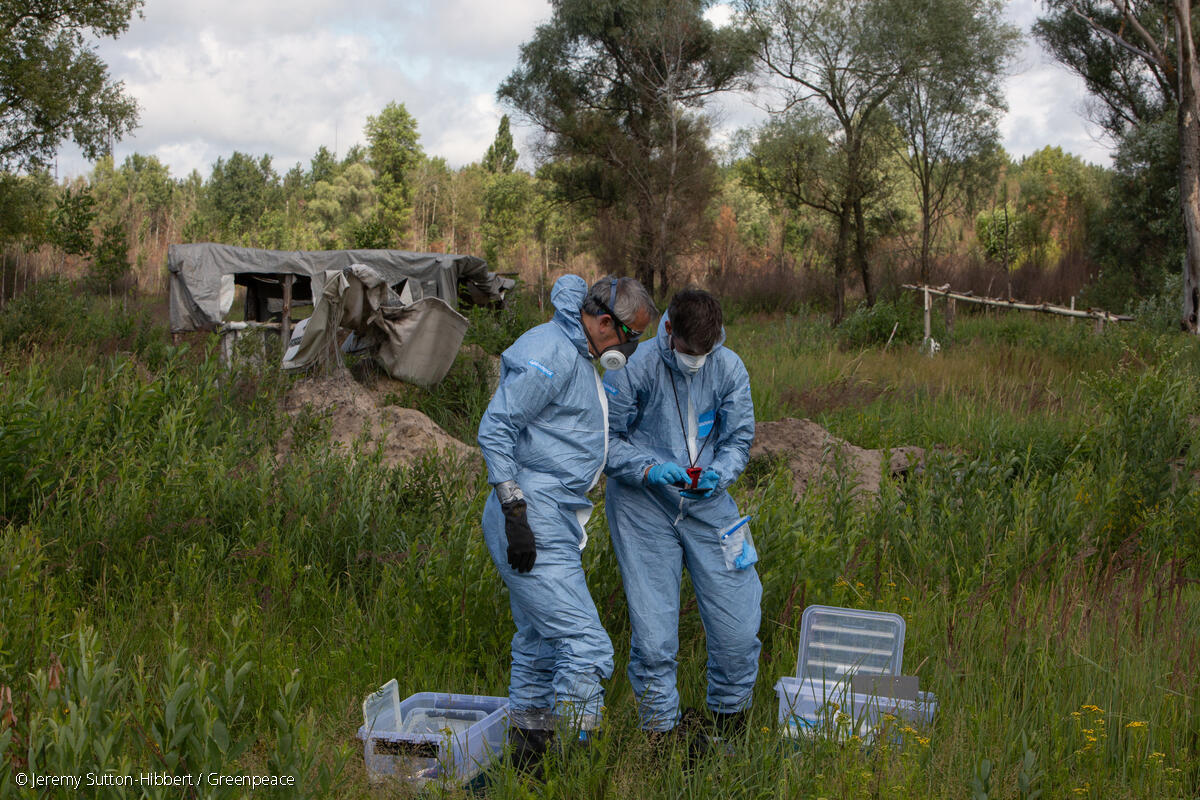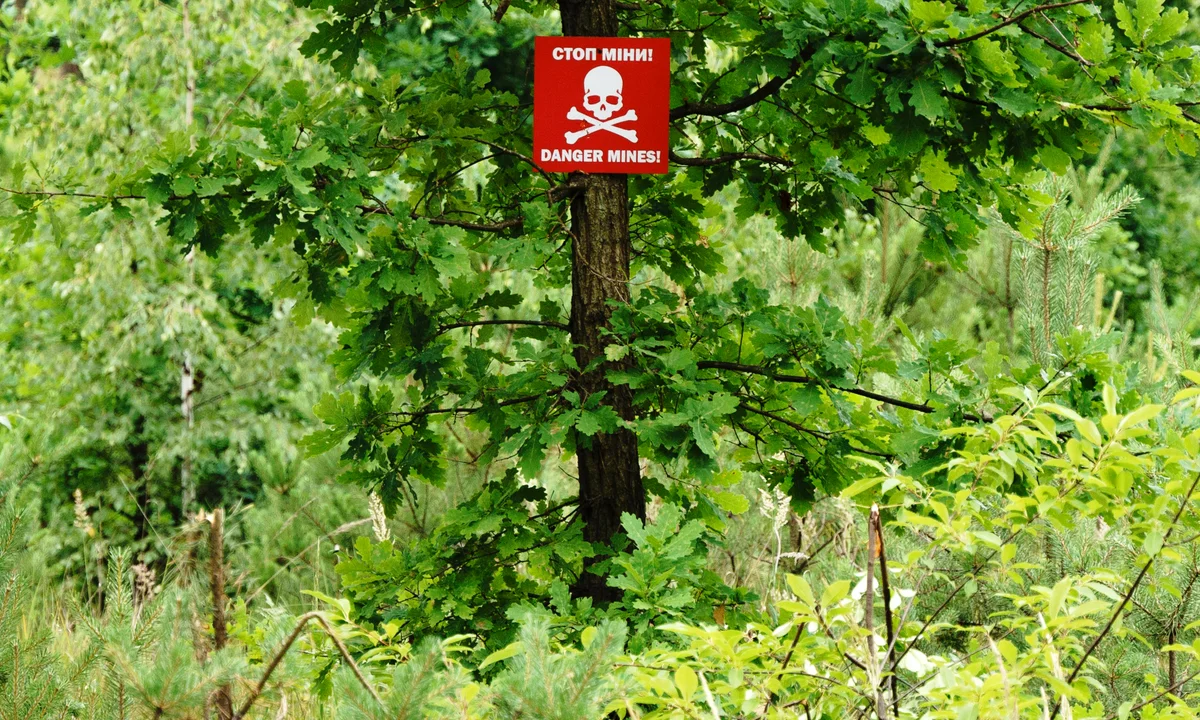Oleksiy Vasyliuk
Almost three years into Russia’s full-scale invasion, Ukraine is now the most heavily mined country on earth, with up to 26% of its territory thought to contain mines and unexploded ordnance. Much of Ukraine’s agricultural and conservation land is likely to be inaccessible for years to come, raising difficult questions about the future of these areas and their inhabitants.
Military action causes comprehensive degradation to the environment and destroys ecosystems. Exploding ammunition, construction of fortifications, wildfires, pollution, and heavy tracked vehicles all damage natural habitats for many species and cause their numbers to rapidly decline. However, perhaps the most long-term negative impact on the environment is caused by minefields, which not only contribute to pollution but also make both agricultural and protected areas inaccessible.
These factors all have different active periods: some, such as explosions, have a short-term impact, while others—pollution, erosion, large-scale fires—produce long-term consequences.
Some consequences may only become apparent over time. For example, the saturation of the territory of Ukraine with landmines creates problems that will take at least decades to resolve. According to some experts, the process of demining Ukraine could take up to 750 years—almost a year of demining work for every day of the war so far.
Ukrainian and foreign media alike have been describing Ukraine as the most heavily mined country on earth since the end of 2022. At the beginning of Russia’s full-scale invasion of Ukraine in February 2022 the first “effectively” mined areas were areas hit by shelling where some of the ammunition remained undetonated, creating the risk of future explosion. This is seen in forests, fields, and populated areas where particularly intense fighting has occurred and the frontline has moved to and fro. Cases in which unexploded ordnance causes the deaths of farmers, forestry workers, or other local inhabitants are unfortunately now widespread.
If we consider all territories where demining activities have yet to be carried out to be effectively mined (not only minefields, but also the possible location of bombs, missiles, or ammunition that did not detonate as a result of military activity or shelling), such areas occupy 156,000 square kilometers or 26% of Ukrainian territory. Other estimates predict that as much as a third of Ukraine’s territory will need to be de-mined. For comparison, this is approximately equal to twice the size of Bulgaria or four times the size of Slovakia.
Landmines in natural and agricultural landscapes
Unexploded ordnance is especially dangerous because its threat is so unpredictable. You can hit a mine while driving along a forest road, while reversing onto the side of the road to do a U-turn, or while harvesting in a field.
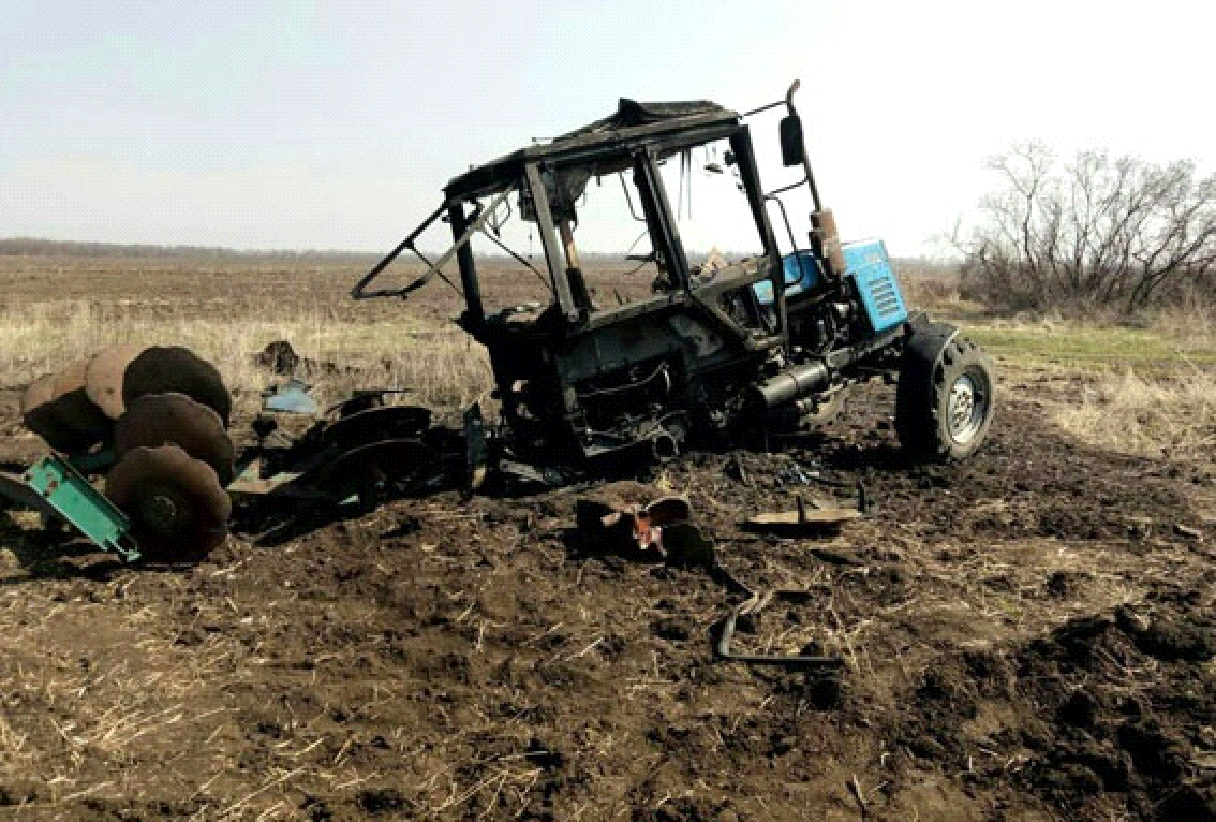
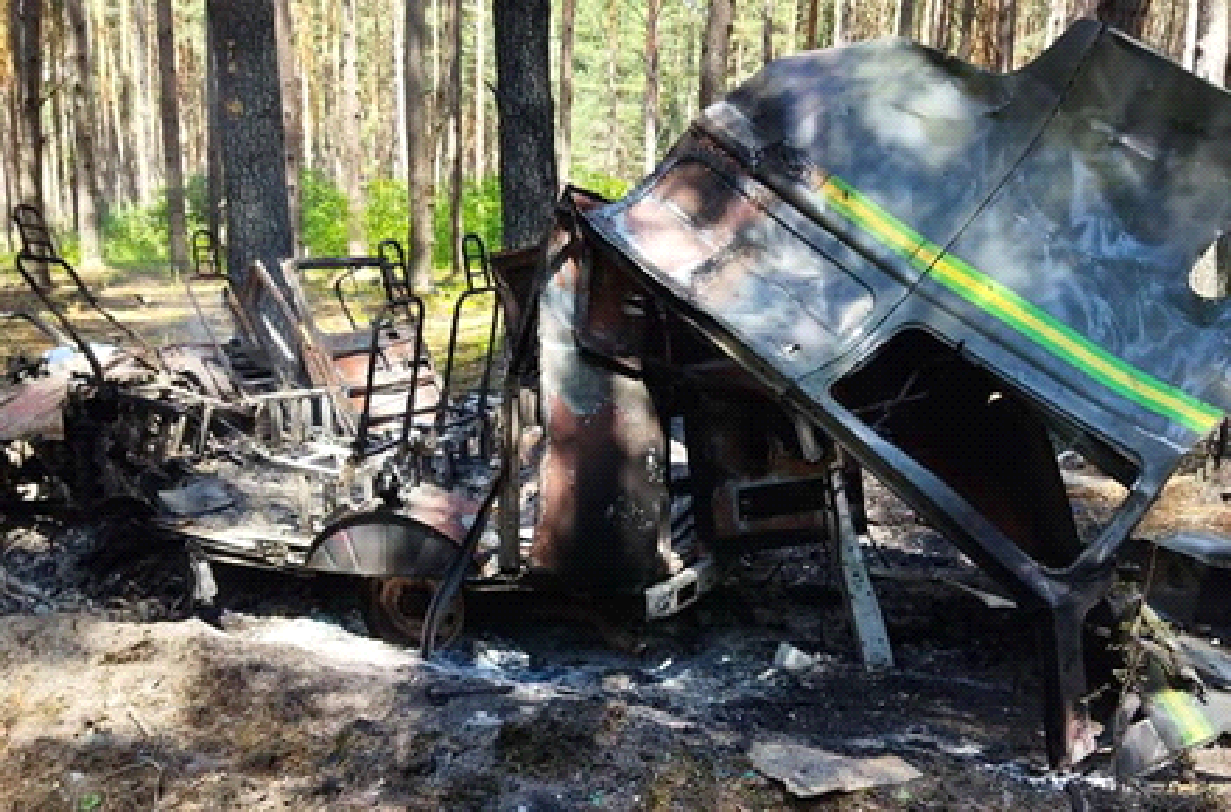
The expansion of military operations has led to a rapid increase in the types of ammunition used and the means of deploying them. Along the frontlines, soldiers deploy an assortment of minefields, tripwires, etc. The Russian army also has the capacity to deploy mines remotely on a large scale using artillery that can scatter thousands of explosive objects over a distance of dozens of kilometers.
The same goes for the cluster munitions used by the Russian army to strike Ukrainian cities, some of which have a delayed-action mechanism and only explode when a person approaches. Explosive objects have also become common finds in buildings liberated by Ukrainian defense forces in populated areas.
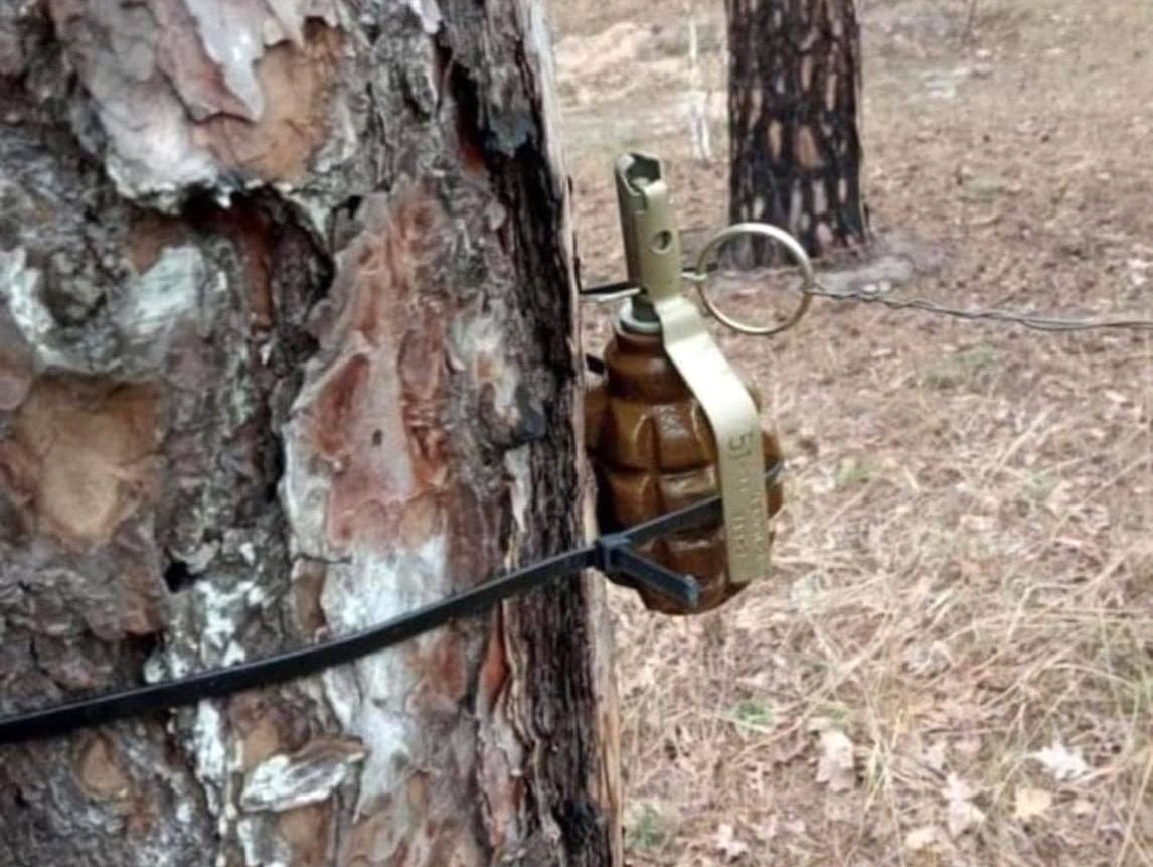
When the front began to stabilize, large minefields were deployed along it. Similarly, minefields are also being created along Ukraine’s state borders with Russia and Belarus, adding ever larger areas of natural and agricultural lands to the list of territories that will need to be de-mined in the future.
Minefields—or simply the presence of explosive objects in the ground after shelling or military action—have therefore become a new reality for Ukrainians. And in this new reality, it is often no longer possible to feel safe in natural or agricultural areas, even in prosperous regions far from areas where fighting is taking place. Dying as a result of a mine or a cluster munition explosion has become a brutal everyday possibility in Ukraine.
State of the environment in mined areas
It remains difficult to talk about the state of the environment in mined areas today. Since the majority of these areas are inaccessible, it is simply impossible to obtain most of the information needed to assess the state of damaged areas. This applies not only to chemical analyses of soil or water, but also to studies of the state of ecosystem restoration, conservation of rare species, etc. This kind of research is essential for making decisions on whether to restore areas or limit their use, as well as assessing the damage caused by military action on Ukrainian territory.
The status of effectively mined areas is becoming an important economic factor, suspending activity in large areas and thereby removing them from agricultural and general economic use.
It is important to note that this primarily concerns Ukraine’s southern regions, which until recently were the most agriculturally developed. At least 30% of Ukraine’s arable land is found in temporarily occupied regions or is effectively mined.
No more sunbathing
Mining has also had a serious impact on opportunities for recreation and domestic tourism.
Primarily of course, this concerns the Crimean Peninsula, traditionally Ukraine’s main resort destination. The coastlines of the Azov and Black seas were also popular—now large parts are under occupation, while the rest is mined and no longer accessible to vacationers. Only some city beaches in Odesa have been cleared of mines and are open for use.
The Azov region aside, domestic tourism and recreation in eastern Ukraine were concentrated along the valley of the Siverskyi Donets River. One of the most popular areas was around the Sviati Hory National Park in the Donetsk Region, which is today one of the areas that has suffered the most from fighting and is partly located on the frontline. In the Sumy Region in northeastern Ukraine, residents used to vacation along the Desna River near the city of Novhorod-Sivers’kyi, currently a militarized border zone. In the northwest of the country, outdoor recreation was concentrated around the Shatskyi National Park, but this is now a border zone.
Essentially, then, the majority of all areas in Ukraine suitable for outdoor recreation, as well as the majority of resort areas that were not previously captured by Russian troops, have become inaccessible to Ukrainians as a result of mining. Only the Carpathian region and the Podillia canyon area (in the Khmelnytskyi and Vinnytsia regions) remain open to visitors.
New challenges for biodiversity
Aside from the economic significance of mined areas, they also create challenges for protecting biodiversity. Environmental aspects are critical when it comes to making decisions on where, when, and how to de-mine areas and must be carefully considered.
Military action leads to the spread of explosive objects, destroys landscapes and soil cover, and also results in the erosion and disruption of the hydrological regime in affected areas, as well as to significant chemical contamination of soils. This means that the further use of such areas should be decided not only within the context of restoring their economic potential, but must also consider soil pollution and threats to biodiversity. It is possible that such pollution may make relatively large areas unsuitable for agricultural use.
The presence of landmines is not a significant factor influencing biodiversity in itself, since only large animals can be physically harmed by landmines. Small fauna, birds, flora and mushrooms do not experience direct consequences from the placement of explosive objects. In addition, the mining of land suspends agricultural and economic activity on that land, and therefore also suspends any negative impact this had on local wildlife.
The exception is spontaneous fires, which cannot be extinguished in mined areas and therefore entail large-scale destruction of biodiversity. The most dangerous are large-scale forest fires, which usually result in the complete destruction of ecosystems over large areas.
Read more: Flames of war: How Ukraine lost over 1,000 square kilometers of forest
The absence of economic activity, as well as the physical damage to most mined areas, lead to the mass spread of invasive species—among both herbaceous plants and trees. Weed seeds accumulated in the soil actively germinate and result in massive overgrowth everywhere where no agricultural activity occurs. This scenario is widespread, be it in populated areas destroyed by military action, abandoned fields under occupation, or other locations that have suffered military damage. Seeds that have accumulated in the soil germinate, resulting in areas where there is no agricultural activity becoming heavily overgrown with weeds. This scenario occurs everywhere, in populated areas destroyed by military action and in abandoned fields, whether they are in occupied zones or have simply suffered military damage.
Read more: Invasive species threat resulting from Russia’s full-scale invasion of Ukraine
The spread of invasive species is also facilitated by the prior degradation of native vegetation as a result of intensive farming practices. Large-scale use of herbicides in the past, the small percentage of surviving natural ecosystems capable of acting as donors for biodiversity, as well as fresh chemical pollution resulting from military activity, make these areas unsuitable for many species and a convenient environment for the spread of aggressive invaders. These include common ragweed (Ambrosia artemisiifolia), horseweed (Erigeron canadensis), black locust (Robinia pseudoacacia), tree of heaven (Ailanthus altissima), and Russian olive (Elaeagnus angustifolia).
Biodiversity is not only disappearing, it is also advancing
A significant part of the areas now considered to be effectively mined are experiencing intensive overgrowth with vegetation. This situation will complicate future de-mining efforts and also have a negative impact on the remnants of natural ecosystems, initially lost amid agricultural landscapes, and now again among the endless thickets of invasive species.
One of the most intriguing aspects of this new state of affairs, however, is that invasive plant species could hypothetically become agents for phytoremediation and soil restoration. Long-term overgrowth of mined areas with wild vegetation will potentially lead to an improvement in soil quality, as well as the extraction of pollutants that entered the soil as a result of exploding munitions. Additionally, in the medium- and long-term perspectives natural vegetation should restore itself in such areas, since the vast majority of invasive species are annual and are eventually displaced as perennial species of native flora spread.
The new reality for protected areas
Some mined and temporarily inaccessible territories have protected status as conservation areas. These include nature reserves, national nature parks, and wildlife sanctuaries, as well as internationally protected sites with the status of UNESCO biosphere reserves. In a situation in which mining and occupation make them completely inaccessible, protected areas can no longer be supervised and are abandoned to the random course of natural processes.
Mining has affected the Black Sea Biosphere Reserve and national parks all over the country. Some, such as the Velykyi Luh, Nyzhn’odniprovs’kyy, Biloberezhia Sviatoslava, Kamianska Sich, Kreminski Lisy and Dvorichansky reserves, are located along the frontline. Others, like the Dzharylhats’kyy, Charivna Gavan and Krymskiy Nature Reserve national parks, are in coastal areas now under occupation. There are also many conservation areas located along Ukraine’s northern borders: the Chernobyl Radiation and Ecological Biosphere Reserve, and the Polissia, Rivne and Drevlianskyi nature reserves. In addition, no fewer than 140 smaller nature conservation areas in border areas or zones of intense military activity have been mined.
Sea mines
It is also worth mentioning the mining of the Black Sea. Different types of sea mines can be laid by ships, boats, and even aircraft. Russia has laid at least hundreds of sea mines in the Black Sea. Some of them are fixed on the seabed, while others drift, following sea currents. There are already documented cases of such mines washing up on beaches in the Odesa region.
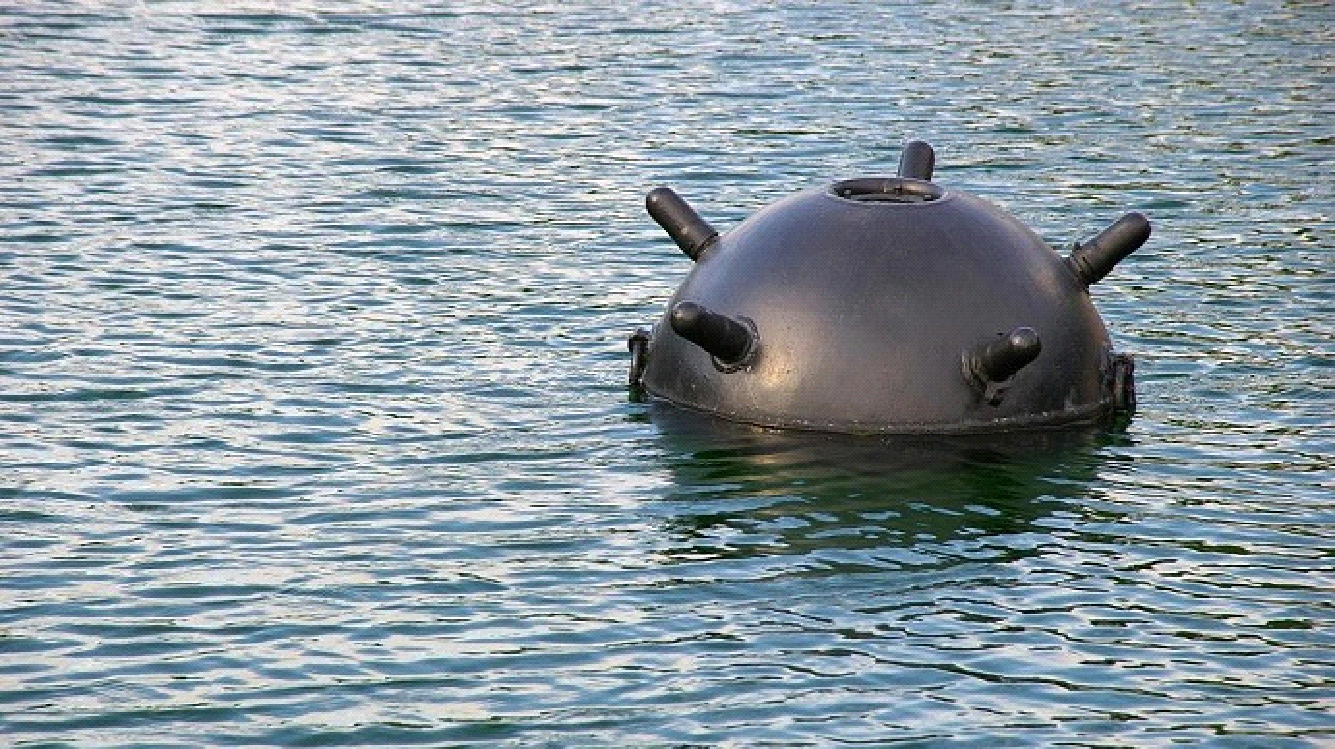
Sea mines can pose serious threats to international cargo vessels, as well as ports and coastal settlements. But they pose a much greater threat to biodiversity, because the explosion of powerful munitions in water kills most living organisms within a large radius of the detonation site. This primarily concerns animals that are especially sensitive to sound waves, particularly cetaceans. Detonation of a sea mine can harm them at great distances.
Just as on land, mines and other explosive objects at sea will remain a threat for a long time and can cause human casualties and significant damage to the environment, both in the coming years and the more distant future. This situation in particular reflects the war’s impact on neighboring countries and creates threats for residents of Bulgaria, Romania, Georgia, and Turkey, as well as for ships from dozens of countries that use Danube ports.
Mines washed down the Dnipro
Another event in the war in Ukraine has written a bleak new page in the history of landmines—the blowing up of the dam at the Kakhovka hydropower plant on 6 June 2023. The release of water on such a huge scale destroyed many settlements, infrastructure, and ports, and carried a large amount of soil, bottom sediments, and vegetation great distances—in some cases, across hundreds of kilometers of open sea to the shores of the Odesa Region. Among other things, the floodwaters washed away large-scale fortifications and minefields that Russian troops had created on the left bank of the Dnipro in anticipation of a possible counteroffensive by the Ukrainian army.
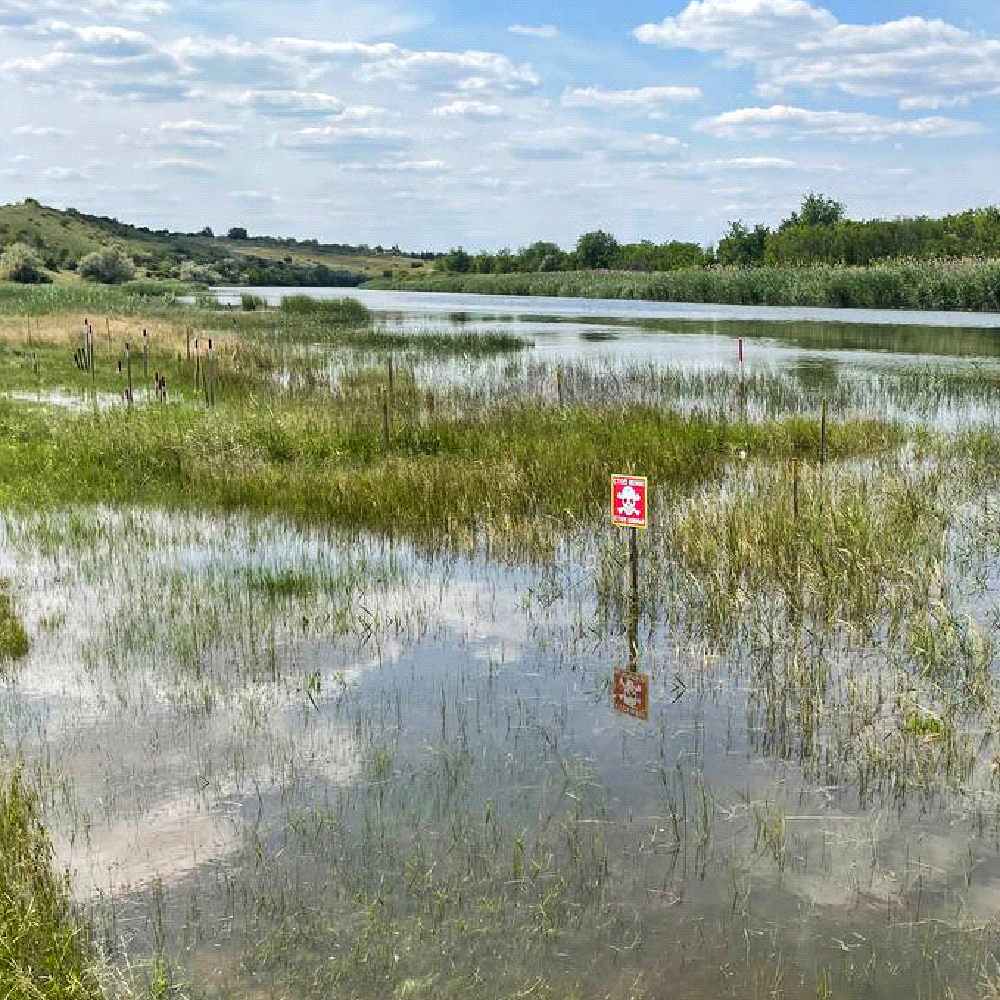

A minefield in the south of Ukraine after the destruction of the Kakhovka dam. Workers from the international humanitarian demining organization HALO tag mines, allowing their movement and detonation to be tracked. Source: The Halo Trust
Will landmines paradoxically allow us to protect nature from humanity in these parts of Ukraine, just as, for example, the status of the Chornobyl exclusion zone turned radiation-contaminated areas into important natural areas that were later awarded the status of a biosphere reserve? Or will nature in mined areas degrade in the near future, since it will be impossible to take measures to prevent the spread of invasive species and wildfires? It is possible that we will only learn the answer dozens of years in the future.
UWEC Work Group will examine possible future scenarios related to mined areas in the next issue.
Translated by Alastair Gill
Source of main image: atn.ua

